Bead Knowledge Center -
Finishing Techniques for STringing and STitching
There are many ways to finish the ends of those wonderful necklaces and bracelets that you are stringing. Here are some ways, including one without a clasp. This section also shows how to finish a thread and start a new one when stitching.
Techniques Listed:
Adjustable Knots
This technique is used when you do not want to add a clasp. It's perfect to finish strung beads for children or for badges that you wear. This finishing technique allows the bracelet or necklace to be resized, another big advantage. The steps are:
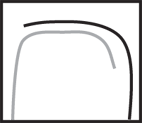 |
|
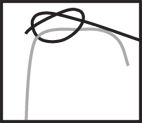 |
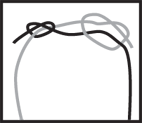 |
| 1. Overlap the cord ends about 4" as shown. |
2. Hold one side of the overlap so there is about 1" of cord end available. |
3. Tie an overhand knot with that end piece around the adjacent portion of the cord. |
4. Repeat with the other cord end. Slide knots bach and forth to vary necklace or bracelet length, then adjust knot tension. |
French Wire
French wire is a coil of gold or silver toned wire that is used to protect and strengthen silk and bead cord from the wear around a finding. The steps to using this are:
| 1. Sting the first 3 beads. |
 |
| 2. Carefully cut about 1/4" of French Wire and gently string it onto your bead cord. String one end of the clasp onto the cord. |
| 3. Leave 2" of cord between the needle and the beads. Thread the cord back through the first bead. The French Wire will form into a loop on which the clasp rests. |
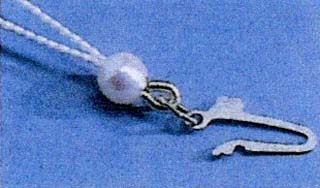 |
| 4. Tie a single knot with both cords between the first and second beads, pulling tightly to secure the knot. String through and secure the second bead in the same way. |
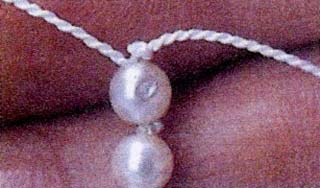 |
| 5. String through the third bead and trim the excess. When your strand is complete, secure these and the last three knots with Jeweler's Cement. |
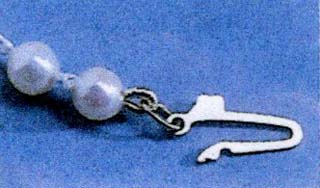 |
| 6. String the rest of the strand. Repeat steps 1-5 on th final three beads, but don't leave extra cord between beads at this end. |
Lark's Head Knot
This knot is an easy way to attached an item with a hole in the center like a donut or ring without using a bail.
 |
Fold a cord in half at the middle and put the fold through a ring or loop from front to back. |
 |
Slip the tails through the fold loop from front to back and tighten. |
Weaver's Knot
This knot is also known by sailors as the sheet wind knot. When used in thread instead of rope, it is one of the smallest and strongest knots you can make. This knot is perfect for joining threads in seed-bead pieces. The knot diagram is courtesy of Cathy Lielausis.
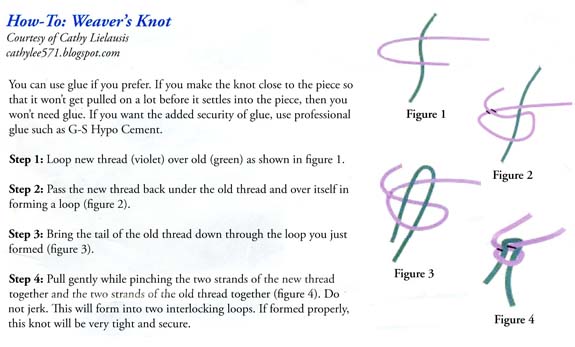
back to the top of page |
| |